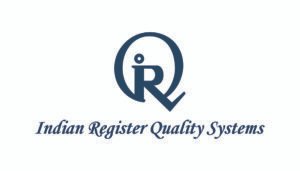BRCGS Audits: A Step-by-Step Guide for a Seamless Certification Process
January 5, 2024 2024-01-31 13:09BRCGS Audits: A Step-by-Step Guide for a Seamless Certification Process

BRCGS Audits: A Step-by-Step Guide for a Seamless Certification Process
The industrial sector for food processing and production is extensive. The various standards related to food safety and quality determine the brand quality. BRCGS or British Retail Consortium Global Standards is the world-famous authorizing agency defining the essential norms for food safety and quality. One can ensure the best quality control and safety measures with BRCGS audits. The integral components of the audit are diverse and the professionals play a pivotal role in the process. One must connect to the top professionals in the industry to meet the highest standards.
In the food industry, safety is a pivotal aspect. The essentiality of safety control is beyond a box to tick on a compliance checklist. Food safety is integral for consumers and brands involved in its production. Ensuring product safety and high-grade quality ensures optimal compliance with food safety standards by manufacturers, retailers, and suppliers. BRC standards and audits are part of the ideal industrial practices and frameworks. These help businesses achieve optimal safety and quality status. Achieving BRCGS certification denotes a commitment to excellence and boosts reputation. It is a noteworthy aspect of food safety, quality, and compliance with industry norms is essential.
About the BRC standards – A global initiative
BRC was established in 1992. The British Retail Consortium or BRC promotes the ideal practices for the food industry amidst evolving landscapes. It defines the regulatory frameworks of UK and EU food safety laws. The BRC Global Standards or BRCGS is a prime global benchmark, promoting food safety and quality programs worldwide. BRC Global Standards is a prominent safety and quality certification program for food products. The standards were developed by the British Retail Consortium, the trade association of the UK retail industry. BRCGS covers an extensive range of food safety and quality concerns. The safety issues include – food safety management systems, product safety, packaging, storage, and distribution techniques. It also delivers a framework for product safety, quality, and operational measures for the food ingredient manufacturing, processing, and packing sector. The BRC Global Standards food safety certification program helps certify suppliers across different countries.
Audit and understanding – Both are necessary
The BRCGS audit requires an in-depth understanding of the standards defined by the consortium. BRCGS defines various standards tailored to meet the requirements of specific sectors like – food safety, packaging, storage, and distribution. Businesses can review the relevant standards based on the industrial type and product offerings to decide the best. Preparation is necessary to ensure a successful BRCGS audit. Hiring a dedicated team to oversee the certification process is the best approach. They can conduct a gap analysis drill to identify areas the shortcomings. The proactive approach helps implement the corrective actions before the audit commences.
9 Integral aspects – Critical to note
BRCGS audit is relevant for organizations meeting the following criteria –
- Related to the process or work with open food
- Food ingredient suppliers and supply retailers
- Manufacturers of consumer products who can handle non-food items
- Trade, or facilitate the trading of food-based products, or store the products
The updated standards contain nine core sections, including –
- Senior Management Commitment – The standard promotes the crucial role of top-level leadership in establishing a culture of food safety throughout the organization.
- The Food Safety Plan – HACCP – The new-age HACCP requirements exhibit a preventative and risk-based approach.
- Food Safety and Quality Management System – The quality management system promotes the importance of including food safety essentials in the core business management system.
- Site Standards – These include the hygiene and sanitation requirements with better and stricter guidelines for pest control, cleaning, and temperature management.
- Product Control – Food product provisions, traceability, and recall procedures to promote product safety at every stage.
- Process Control – Validating and monitoring the food management and control process helps minimize the risk of contamination, promoting product consistency.
- Personnel Training – Essential training facilities for food handlers, promoting a knowledgeable and responsible workforce.
- Production Risk Zones – Identifying the risk zones and implementing control measures are outlined to reduce the hassles of high-risk, high-care, and ambient high-care handling for vulnerable products.
- Requirements for Traded Products – Identify the dynamics and growing complexities of global food chains, ensuring optimal safety of traded products.
Significance of audit – The BRC can improve the safety and quality of food products with the best-in-class and high standards. BRC certification is a necessity for many retailers and suppliers. The certification has helped raise the standard for food safety across the industry. One can ensure the best solution by adhering to the defined benchmarks. The BRC-certified companies can manage and mitigate the risk of food safety incidents, ensuring optimal consumer confidence in their products.
Components of BRCGS audit
A BRC audit evaluates the compliance and safety status and helps you match them with the BRC Global Standards. It is a comprehensive assessment of the food safety management system, food management processes, and operational procedures for the organization. The audit is conducted by an independent BRC-accredited certification body, ensuring optimal safety and reputational advantage.
- Documentation – The foremost component involves reviewing the food safety documentation. It helps ensure the accuracy of the data. The documentation includes the food safety manual, procedures, and records for the company.
- Site assessment – Evaluating the site requires a thorough inspection of the company’s production facilities, equipment, resources, and premises. It also includes the possible conditions that may create a risk to food safety. (poor sanitation, inadequate pest control solutions, or improper storage facilities)
- Employee assessment – Employees need sufficient training to realize the benefits of the food safety program. They can implement the best steps with the essential knowledge base. The assessment steps for employees are crucial to review their understanding and adherence to food safety practices. It helps define the roles and responsibilities, ensuring operational transparency to the next level.
- Product checks – This is an all-inclusive step for testing finished products. The product check helps verify the safety and quality of the product. The different testing methods are – microbiological testing, chemical testing, and sensory testing.
Make a prudent call.
Ensure the best audit services with professional auditors. They have the necessary resources to simplify the process and deliver accurate reports on the food safety index. IRQS is first certification body to receive NABCB Accreditation for BRCGS standard in India. Consider the professional services to ensure optimal accuracy.


